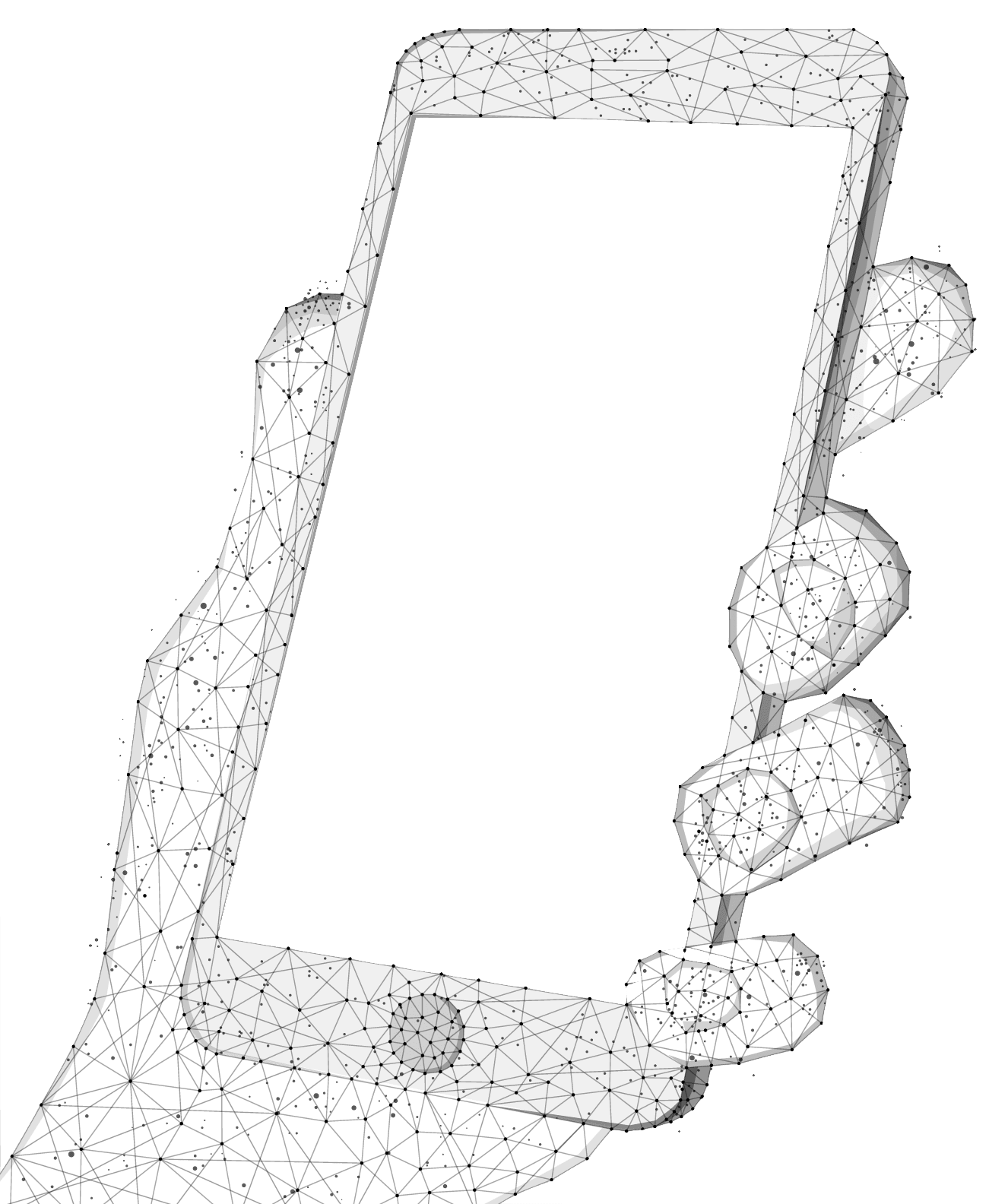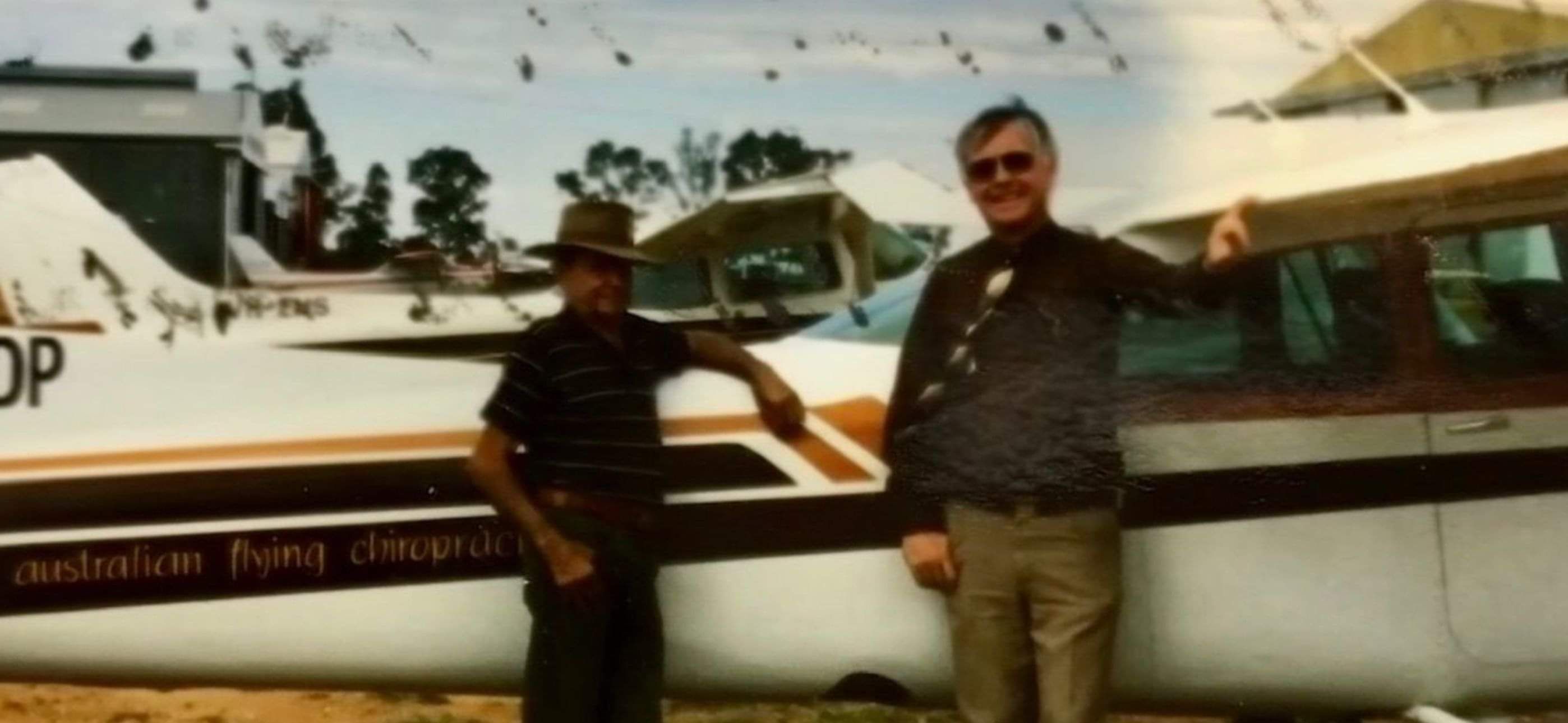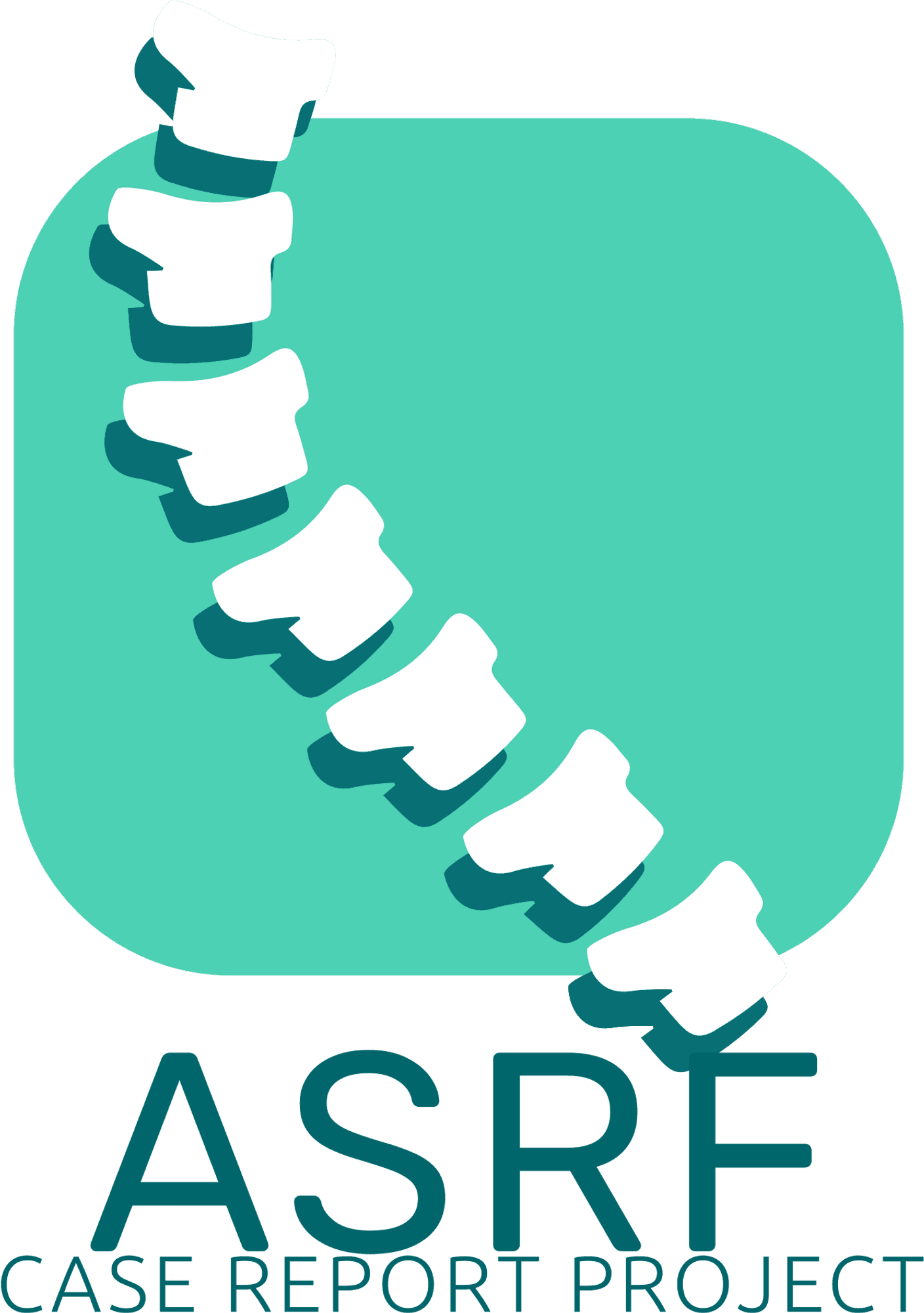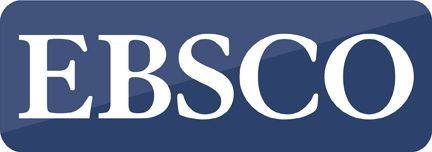Chiropractors will want to read us anywhere, anytime

Fourth Quarter 2024
(Oct to Dec)
Volume 5, Issue 2 (5-2)
Amplify your experience
The cranial connection and the neuropathic process
Narrative: This paper presents meticulous clinical instruction on the advanced-level diagnosis and treatment of presentations involving the cranial ventricles through highly targeted cranial adjusting.
The importance and clinical relevance of the Shimizu reflex is demonstrated along with impeccable approaches to relevant head and neck musculature.
The technique of choice is the NeuroImpulse Protocol,™ a low force and gentle technique which is specific in its application. Throughout the text, important clinical points are highlighted.
This paper is taken from Module 9 of the NeuroImpulse learning materials© and manual and provides the busy practitioner with a clean and tidy clinical approach to cranial adjusting in the young.
Indexing Terms: Chiropractic, Clinical management; Cranial; NeuroImpulse Protocol; Shimizu reflex.
Cite: Davies NJ. The cranial connection and the neuropathic process. Asia-Pac Chiropr J. 2024;5.1. apcj.net/papers-issue-5-2/#DaviesCranialConnecion
Temporomandibular Joint Disorder: Differing professional treatment options reviewed in two case reports. A speculative Case Series
Narrative: The comprehensive chiropractic TMJ examination must include the mandible’s motion by the muscles of mastication, the dental occlusion, the joints including its articulating disc, and their effects upon the motor nerves of the body. TMJ dysfunction can be caused or perpetuated by disturbance in any of the links in the closed kinematic chain of the ‘stomatognathic system’.
The muscle organisation within the chain is examined in chiropractic applied kinesiology by having jaw motion evaluated in opening, closing, lateral sway and teeth clenching during manual muscle testing of related muscles. It may also be evaluated with swallowing, talking, and with the head in different positions.
Three differing chiropractic and dental treatments in two cases of TMD (temporomandibular disorders) are compared in this case series review.
Indexing Terms: Chiropractic; AK; Applied Kinesiology; Temporomandibular Joint Disorder; TMJ.
Cite: Cuthbert S. Temporomandibular Joint Disorder: Differing professional treatment options reviewed in two case reports. A speculative Case Series. Asia-Pac Chiropr J. 2024;5.2. apcj.net/papers-issue-5-2/#CuthbertTMJOpinions
Applied Kinesiology Chiropractic: Clinical Algorithms for Comprehensive Management of Temporomandibular Joint Disorders
Narrative: Since temporomandibular joint function is interrelated with so many remote problems and is so frequently involved on a functional basis, it is realistic to at least do a screening examination of this mechanism on every new patient.
This type of examination requires little time and can be very effective in finding a majority of problems in this area. A considerable amount of evidence indicating the need for a more thorough evaluation becomes available during history-taking and consultation. This information comes from what the patient tells the physician and from body language observed during the discussion.
Indexing Terms: Chiropractic; AK; Applied Kinesiology; Temporomandibular Joint Disorder; TMJ; management algorithms; clinical flowcharts.
Cite: Cuthbert S. Applied Kinesiology Chiropractic: Clinical Algorithms for Comprehensive Management of Temporomandibular Joint Disorders. Asia-Pac Chiropr J. 2024;5.2. apcj.net/papers-issue-5-2/#CuthbertTMJAlgorithm
Atlas Orthogonal Chiropractic practitioner presentations of Craniocervical Junction and Brainstem disorders: A case series and review of 15 patients
Narrative: Chiari malformations, or cerebellar tonsillar ectopia (CTE), along with cranio-cervical syndromes (CCS) and cranio-cervical instability (CCI) may contribute to brainstem compression presenting as a complex clinical conundrum for physicians that treat the cranio-cervical junction (CCJ) as part of their clinical practice.
Patho-anatomical features causing the constellation of symptoms that confound efforts at diagnosis by mimicking other disorders are discussed. The lack of knowledge creating misdiagnoses, misunderstanding of how to treat, and possible dangerous treatment outcomes, in surgical and non-surgical care, is addressed as it permeates through medical and musculoskeletal physicians such as chiropractors and physiotherapists.
Discussion on where the limitations of surgery and contraindications to manual therapy fall in comparison and contrast to the oft sought out Atlas Orthogonal (AO) chiropractic approach is also given. Scores of patients accessing online information increasingly to ascertain treatments for symptoms their practitioners can neither explain nor alleviate presents a very uncertain and possibly dangerous picture for sufferers.
This report provides a structured approach to the assessment of such patients with recommendations for safe and effective clinical intervention and care. The lessons are taken from a series of 15 cases purposively selected from the clinics of 2 AO practitioners known to each other, one in Australia and the other, USA.
Indexing Terms: Chiropractic; Brainstem’ Chiari malformation; upper cervical; craniocervical junction; cerebellar tonsillar ectopia; cranio-cervical instability; Atlas Orthogonal; case series
Cite: Ierano J. Atlas Orthogonal Chiropractic practitioner presentations of Craniocervical Junction and Brainstem disorders: A case series and review of 15 patients. Asia-Pac Chiropr J. 2024;5.2. apcj.net/papers-issue-5-2/#IeranoAOCaseSeries
Dr. Robert Coté’s Clinical Research
Narrative: The late Dr Robert Coté was one of the top instructors working under Dr. DeJarnette. He has bequeathed his lifelong clinical research to assist us in our endeavour of bettering our clinical skills.
After all his years of clinical experience, he never stopped being amazed at how the basic SOT principles were proven to be correct and consistent with the new research in the field of neurophysiology.
He consistently studied the patients that were not responding positively to treatment and dedicated his life to understanding the underlying causal mechanisms.
His extensive clinical experience has led him to further his understanding of the body’s compensatory mechanisms involving mechanical patterns, neurophysiology and bio- energy, all within the SOT model of indicators. Understanding, recognising and correcting these compensatory mechanisms can facilitate the resolution of some of our most difficult cases.
The objective of this paper is to discuss these compensatory mechanisms and their respective indicators.
Indexing Terms: Chiropractic; SOT; Robert Coté
Cite: Vitez C. Dr. Robert Coté's Clinical Research. Asia-Pac Chiropr J. 2024;5.2. apcj.net/papers-issue-5-2/#VitezCoteResearch
Click through Dr Vitez's slides from her platform presentation and get the PDF
A tale of two paths. [WCCS]
Narrative: The first path for a chiropractic student is to become qualified and build the foundation for all that will be done in practice. There is a secondary path, one where the students find their passion. If this first path is everything you need to be qualified, the second path would be considered anything that you do while you’re in school that helps you to become competent.
This secondary path is the path that will help the student to one day stand in front of people with unconscious competence because they preemptively spent the time and energy to develop themself into the doctor they dreamt of becoming.
Taking time to care for one’s well-being while walking these paths is not optional, it is mandatory.
Indexing terms: Chiropractic; World Congress of Chiropractic Students, WCCS; self-care, well-being.
Cite: Boudar JW. A tale of two paths. [WCCS]. Asia-Pac Chiropr J. 2024;5.2. apcj.net/papers-issue-5-2/#BoudarTwoPaths
Evidence based chiropractic education: A student’s perspective
Narrative: Students, particularly those with an intimate experience of the power of Chiropractic in their own lives, find an educational environment challenging when it is built on denial of the subluxation.
Rather than attempting to fain political favour by teaching a poor version of Chiropractic as ‘chiropractic medicine’ institutions must start acting responsibly with rigorous research into why it is that conventional Chiropractors consistently achieve positive patient outcomes through subluxation-focussed patient care.
Indexing Terms: Chiropractic; education; curriculum; evidence based practice.
Cite: Nichols JG.Evidence based chiropractic education: A student’s perspective. Asia-Pac Chiropr J. 2024;5.2. apcj.net/papers-issue-5-2/#NicholsStudentPerspective
Point of view: Chiropractic philosophy [Column]
… Chiropractic philosophy is about your lifetime, it is not about what happens after your death …’
Indexing Terms: Chiropractic; establishment; subluxation; innate; philosophy
Cite: McKibben M. Chiropractic philosophy [Column]. Asia-Pac Chiropr J. 2024;5.2: apcj.net/papers-issue-5-2/#McKibbenColumn
Five unrelated abstracts of Chiropractic care showing diversity of clinical presentation
Narrative: This small collection of abstracts presents five disparate aspects of Chiropractic care to demonstrate the diversity of patients seen in the general practice of conventional Chiropractic.
There is a mix of cases and presentations and of course, clinical approaches. It is challenging to find any relationships or theme among these reports.
The conclusion is that all practitioners are encouraged to reflect on their practice and commence a habit of documenting the variety of patients to whom care is provided. It is clear there is no ‘recipe-book’ and that a well-trained Chiropractor must demonstrate a broad skills base to ensure high levels of patient management, regardless of their individual paradigm of care.
Indexing Terms: Chiropractic; Conventional Chiropractic; case-mix.
Cite: Blum CL. Five unrelated abstracts of Chiropractic care showing diversity of clinical presentations. Asia-Pac Chiropr J. 2024;5.2 apcj.net/papers-issue-5-2/#Blum5cases
Sacro Occipital Technique (SOT):
Documentation and recording system
Narrative: Sacro Occipital Technique (SOT) is a systems method of Chiropractic, assessment oriented and reasoning based, therefore a suitable recording system becomes a necessity.
Reasoning in this regard is defined as ‘the process of forming conclusions, judgements, or inferences from facts or premises’.
It has been my experience that the recording system outlined in this paper addresses these qualities while allowing for an ongoing method of reference and guidance.
Indexing Terms: Sacro Occipital Technique (SOT); Chiropractic; ;SOT Categories; SOT Indicators; Documentation.
Cite: Getzoff H. Sacro Occipital Technique (SOT): Documentation and recording system. Asia-Pac Chiropr J. 2024;5.2. apcj.net/Papers-Issue-5-2/#GetzoffSOTDocumentation
Infant Vertical Suspension testing
Narrative: In 2018 a Melbourne Chiropractor placed on social media a video of him safely and professionally performing an infant vertical suspension test. Leaving aside the stupidity of any Chiropractor using social media to show videos of their professional activities which are private interactions with a patient, the video of the test was used by Deep Medicine to hysterically and politically attack Chiropractors for inappropriate treatment of children.
In turn this led to the Government of the State of Victoria, Australia, in 2019 commissioning an agency of its Department of Health and Human Services, Safer Care Victoria (SCV), to undertake a review of chiropractic manipulative care for children under 12 years of age. This review found Chiropractic care to be safe.
However as of September 2024 the care of children in Australia by Chiropractors remains in question given the Federal Minister for Health, again under medical pressure, required the Chiropractic Board of Australia to restore its warning against Chiropractors providing spinal manipulation to children under 2.
The actual test in question sits within the standard protocols of safe care of infants in both medicine and chiropractic, a reality obfuscated by the medical enemies of Chiropractic in their eagerness to advance the Iowa Plan for containment of the profession.
This paper by a world-renown paediatric Chiropractor and educator examines the ‘infant vertical suspension test’ and gives clinical meaning to the observations provided by this safe and effective, gentle clinical test.
Indexing Terms: Chiropractic; evidence based practice; paediatrics; Safer Care Victoria; infant vertical suspension test; hanging baby
Cite: Rosen MG. Infant Vertical Suspension testing. Asia-Pac Chiropr J. 2024;5.2. apcj.net/papers-issue-5-2/#RosenInvertedSwingTest
Cauda Equina Syndrome: Are final-year clinical student chiropractors and their supervisors recognising and implementing the correct referral pathways in the UK? Two case reports
Background: Low back pain is a condition that is treated by chiropractors, osteopaths, and physiotherapists who use manipulation as one of their therapies. One presentation of low back pain is a disc extrusion or sequestration. Here the disc material has ruptured through the annular fibres and because of its acidic nature starts to damage the nerve root and can lead to cauda equina syndrome (CES). This paper explores this documented cause of CES with final year chiropractic students who are in a primary contact position. It describes whether they screen for signs and symptoms of CES and ask the appropriate questions leading to correct referral pathway. We review iatrogenic causes of CES by professionals who use manipulation, and ask does the literature support this effect? If signs and symptoms are not diagnosed, it can lead to a life-changing future for the patient and result in a legal process and an insurance claim. Professions treating low back pain must be vigilant and constantly screen for CES.
Intervention: Two cases presented to the AECC University college Chiropractic (AECC UC) Teaching Clinic are reviewed. Final-year students see patients in their placement year as part of their training. They take a detailed history and physically examine the presenting complaint. Low back pain is a common complaint presented by patients at the AECC UC Chiropractic teaching Clinic. Are Cauda Equina Syndrome (CES) questions asked during the initial consultation and treatment? The required routinely asked questions are as follows: Has the patient experienced any of or a combination of the following signs and symptoms: saddle anaesthesia, nerve root pain, sexual dysfunction, bowel disturbance, bladder disturbance and relevant medical history relating to a previously diagnosed CES?
Outcomes: The findings from the case reports suggest that chiropractic students supervised by registered chiropractors are good at recognising CES signs and symptoms either initially or ongoing, through a course of treatment and are following the modified NHS guidelines for referral with the AECC UC CES pathway. The literature refers to a mechanical cause of CES due to lumbar spinal manipulation. According to the current literature lumbar spinal manipulation delivered by a registered professional for low back pain is not a risk factor for CES.
Conclusion: Patients with low back pain may have an elevated risk of cauda equina syndrome independent of manipulative treatment which is not considered a risk factor. Therefore, students and clinicians treating lower back pain patients are ideally placed in clinical settings to identify cauda equina syndrome signs and symptoms and should always be aware of any deterioration in presentation and review CES signs and symptoms and use the appropriate clinical pathway.
Indexing terms: Chiropractic; Cauda equina syndrome; chiropractic adjustment; manipulation; care pathway.
Cite: Nunn N, Gregory C, Battiston A, Breeze S. Cauda Equina Syndrome: Are final-year clinical student chiropractors and their supervisors recognising and implementing the correct referral pathways in the UK? Two case reports. Asia-Pac Chiropr J. 2024;5.2 apcj.net/papers-issue-5-2/#BNunnCaudaEquina
The Managerialist Revolution in Medicine
Narrative: Medicine has always been hierarchical; but never has it been so conformist, with uncritical, thoughtless physicians marching in lockstep to hit metrics dictated by vested interests that show little concern for sick patients.
Confidence in medicine is falling and I argue that real patients cannot be adequately managed by a diagnostic-based algorithm or treated by an iPad. Medicine is constituted by a particular kind of relationship, a relationship based upon trust between a patient made vulnerable by illness and a doctor who professes to use his knowledge and skills always and only for the purposes of health and healing. No technological advance, no societal development, will ever alter this.
Indexing Terms: Medicine; EBM; managerialism; Technocratic Scientism; Utopian Progressivism; Liberationism.
Cite: Kheriaty A. The Managerialist Revolution in Medicine. Asia-Pac Chiropr J. 2024;5.2. apcj.net/papers-issue-5-2/#KheriatyManagerialistMedicine
Muscle clamps and patterns as an emotional disturbances reflection: Wilhelm Reich’s armour concept
Abstract: Wilhelm Reich’s theory of ‘muscle defense’ remains an important chapter in the history of psychology, psychotherapy and psychoanalysis. His exploration of the mind-body interaction and the role of emotional experience in physical health challenged conventional wisdom. Although his life was marred by controversies, his ideas continue to resonate with those seeking a holistic approach to healing and well-being.
Application of his ideas is seen in the work of George Goodheart who proposed a method of functional muscle testing which made it possible to obtain biological feedback from the body due to which the emotional disorders more accurately diagnosed.
Indexing Terms: Chiropractic; Wilhelm Reich; George Goodheart; psycho-emotional disorders; muscle patterns.
Cite: Kirdoglo GK. Muscle clamps and patterns as an emotional disturbances reflection: Wilhelm Reich’s armour concept. Asia-Pac Chiropr J. 2024;5.2. apcj.net/Papers-Issue-5-2/#KirdogloArmour
Channeling healing energy: Encouraging active patient participation in their care, Part seven
Narrative abstract: Medicine, oncology, and nursing all are exploring the concept of stimulating active patient participation in their health care. A doctor’s involvement will need to be flexible and accommodating to the patient’s individual preferences in order to maximise the benefits of their participation on health outcomes.
While Chiropractors are not psychotherapists they can help guide a patient to consider psychotherapeutic care when it appears that there is a relationship between a patient’s physical presentation and their emotional stressors. Before we can attempt to influence our patients we need to gain their trust as well as lead by example. If we personally don’t have healthy lifestyle choices and behave in emotionally balanced ways it can adversely affect the advice we might share with our patients.
As healthcare providers we need to see ourselves as partners in our patient’s health. We need to meet our patients on their path and walk with them side by side.
Indexing terms: Chiropractic; chiropractor; active patient participation; healing energy.
Cite: Blum CL. Channeling healing energy: Encouraging active patient participation in their care, Part seven. URL Asia-Pac Chiropr J. 2024;5.2 apcj.net/Papers-Issue-5-2/#BlumHealingEnergy7
‘Off-Label’ Valsalva Manœuvre
Narrative abstract: The Valsalva manoeuvre is a forced expiratory effort against a closed airway as one of several simple physical actions called vagal manoeuvres that act on the vagus nerve to slow heart rate.
This manoeuvre increases intrathecal pressure and may point to a space occupying lesion if pain about a spinal region is reported. There may also be dermatomal radiations indicative of neurological involvement.
Here I present several ‘off label’ clinical uses of the Valsalva manoeuvre and give an integration with manual muscle testing to increase the clinical tools available to the Chiropractor.
Indexing terms: Chiropractic; Valsalva manoeuvre; clinical assessment; subluxation; therapy localisation.
Cite: Masarsky CS. ‘Off-Label’ Valsalva manœuvre. [The wide-angle lens]. Asia-Pac Chiropr J. 2024;4.3. apcj.net/papers-issue-5-2/#MasarskyValsalva
Down the sacrum rabbit hole: Part 2
Narrative: Here I continue my presentation of an overview of sacral listings conceptualised by Gonstead. I provide the clinical rationale for listings of the sacral base which have clinical utility for sacral adjusting.
In particular I address the ‘base anterior’ listing.
These additional concepts take into account developmental anomalies such as lumbarisation and sacralisation.
Indexing terms: Chiropractic; Gonstead; technique; sacrum; sacral listings; anomalies; base anterior.
Cite: Johnson RC. Down the sacrum rabbit hole: Part 2 Asia-Pac Chiropr J. 2024;5.2. apcj.net/papers-issue-5-2/#JohnsonSacrum2
What if subluxation was not where you thought it was? Seeking an explanation from ideas of Quantum Mechanics
Context: This paper further examines the idea of subluxation as it is used commonly within conventional Chiropractic practice and builds on previous papers in which I identify the majority of Chiropractors as realists who describe clinical subluxation using fuzzy dialogue and achieve successful clinical outcomes through patient interdependency. Here I show how consideration of an aspect of Quantum Mechanics can resolve technical issues, namely the absence of physical dimensions, regarding the identification of subluxation.
Discussion: Our minds will accept as reality something for which our senses receive inputs which can be matched to a mental model. I propose that Chiropractors should forget the idea of Newtonian science which demands agreement to confirm something exists and instead accept that as a clinical lesion subluxation is ethereal and will exist when and where a trained Chiropractor finds clinical evidence to say it exists. The idea of superposition from Quantum Mechanics allows two Chiropractors to identify a subluxation in one patient’s spine in different locations yet still render effective clinical intervention.
Conclusion: The discipline of Chiropractic deserves better than an unethical flat-earth argument against ‘life force, innate intelligence, vitalism and subluxation’ in a world where our rhetoric should be moving into the realm of Quantum entanglement and the commentariat should be working harder to make sense of Chiropractic’s clinical realities in a way that will advance and not retard the discipline. I find Quantum Mechanics to allow such forward thinking.
I propose Chiropractors should start thinking of subluxation as a quantum thing with all the questionable dimensions that a quantum thing carries.
Indexing Terms: Chiropractic; subluxation; Quantum Mechanics.
Cite: Ebrall P. What if subluxation was not where you thought it was? Seeking an explanation from ideas of Quantum Mechanics. Asia-Pac Chiropr J. 2024;5.2. apcj.net/Papers-Issue-5-2/#EbrallQuantum
In memoriam: Paul Daniel Pringle
A tribute to the ‘flying chiropractor'
Cite: Editorial staff. Paul D Pringle [In Memoriam]. Asia-Pac Chiropr J. 2024;5.2 apcj.net/papers-issue-5-2/#IMPringle

In memoriam: Dean Lines
Cite: Gilberd C, Cahill D, Editorial staff. Dean H Lines [In Memoriam]. Asia-Pac Chiropr J. 2024;5.2 apcj.net/papers-issue-5-2/#IMDeanLines
Improvement in Obstructive Sleep Apnoea Symptoms in a 26-year-old Male Concomitant with Chiropractic Care: A case report
Background: Disordered and inadequate sleep is a growing public health concern. One of the most common sleep disorders is obstructive sleep apnoea, a condition that interrupts sleep through multiple episodes of airway collapse and subsequent decrease in oxygen saturation.
With many of the treatments being invasive and the outcomes unreliable, there is a significant need for alternative and effective management options for individuals with OSA. The following case report details the effective management of obstructive sleep apnea in a young adult with chronic pain from previous injuries, with Chiropractic care.
Intervention: The patient underwent a course of Chiropractic care during which he was adjusted two to three times per week using full spine adjusting, Diversified Technique with manual adjusting.
Outcomes: At the completion of his care plan, his CPAP machine reported a 50% decrease in his apnea episodes, and his sleep quality had increased significantly. This was accompanied by notable increases in spinal range of motion tests, resolution of his cervical syndrome, and a decrease in musculoskeletal pain.
Conclusion: This case report indicates that Chiropractic care may be useful in managing sleep apnea, but further research is required to confirm the mechanisms and strength of this effect.
Indexing Terms: Chiropractic; Subluxation; obstructive sleep apnoea.
Cite: Wesdorf J, Postlethwaite R, McIvor C. Improvement in Obstructive Sleep Apnoea Symptoms in a 26-year-old Male Concomitant with Chiropractic Care: A case report. Asia-Pac Chiropr J. 2024;5.2. apcj.net/papers-issue-5-2/#WesdorfSleepApnoea
Improvement in Hemiplegic Migraines, Drop Seizures, Sleep, and Quality of Life in a 23-year-old female undergoing concentrated Chiropractic care: A case report
Background: A 23-year-old female, novice to chiropractic care, presented for care with primary concerns relating to hemiplegic migraines, drop seizures, extreme fatigue, pilonidal cyst, leg and back spasms, poor sleep, and deteriorating mental health and cognitive function. At the time of her presentation, the young female could no longer drive, work, or live unassisted.
Intervention: The patient presented for an initial week of concentrated chiropractic care, which was then repeated five times over five years. During this time, she underwent 55-65 chiropractic adjustments per five-day course of concentrated chiropractic care. Additional care instructions included dietary advice, including the limitation of inflammatory foods, neurological exercises, customised nutritional-support detoxification, and spinal stretches.
Outcomes: Gradual but significant improvements were noted at each week of care, resulting in the patient seeing a complete resolution of her presenting complaints and a significant improvement in her quality of life, including being able to return to normal health, regain her working life, and engage in other normal activities of daily living.
Conclusion: The impact chiropractic care has had on this patient cannot be understated. Given that no short of eleven other health practitioners had been unable to resolve her comorbid presentations, caring for her whole nervous system using concentrated chiropractic care that delivers many adjustments in a short amount of time, thus theoretically increasing the neuroplastic effect seen over a short amount of time, may have been the mechanism behind life-changing care. This presents a rationale for further investigation into concentrated chiropractic care and Averio Functional Neurological Technique.
Indexing Terms: vertebral spinal subluxation; Chiropractic; Chiropractic adjustment; Quality of Life; hemiplegic migraine.
Cite: Kotlerman S, Martin A, Pierce D, Postlethwaite R, McIvor C. Improvement in Hemiplegic Migraines, Drop Seizures, Sleep, and Quality of Life in a 23-year-old female undergoing concentrated Chiropractic care: A case report. Asia-Pac Chiropr J. 2024;5.2. apcj.net/Papers-Issue-5-2/#KotlermanAnxiety
Reduction in seizure activity in an Epilepsy sufferer with Autism Spectrum Disorder under Chiropractic care: A case report
Background: A 22-year-old female presented for Chiropractic care with chief complaints related to the frequency and severity of her epileptic episodes. These were severe and life-interrupting, preventing her from engaging in educational, social, employment or exercise activities, and ordinary care including pharmaceutical interventions had not solved this problem.
Intervention: The patient was placed on an initial care plan of three visits per week and then adjusted down as per her nervous system’s ability to adapt. During this time she was adjusted using the Torque Release Technique and was advised to use a Denneroll posture correction device at home.
Outcomes: The patient’s seizures ceased, allowing her to engage in exercise, and social activities and, thanks to increased mental clarity, begin searching for employment.
Conclusion: In this case, Chiropractic care was the only change to the patient’s care regime, and we suggest that Chiropractic care is associated with the cessation of her seizures.
Indexing Terms: Chiropractic; Subluxation; epilepsy; seizures; ASD (autism).
Cite: Pellegrino A, Postlethwaite R, McIvor C. Reduction in seizure activity in an Epilepsy sufferer with Autism Spectrum Disorder under Chiropractic care: A case report. Asia-Pac Chiropr J. 2024;5.2. apcj.net/papers-issue-5-2/#PellegrinoEpilepsy
Improvement in migraines, sleep, musculoskeletal pain and anxiety in a 27-year-old Post-Natal female undergoing Chiropractic care: A case report
Background: A 27-year-old postnatal female presented with musculoskeletal pain, but on examination was found to also have migraines, problems with memory, energy and focus, anxiety, low energy and difficulty sleeping. She reported waking up feeling stiff, sore and unrested.
Intervention: The patient was placed on a twelve-week care plan during which time she was checked and adjusted seen twice a week and adjusted using a Torque Release Technique analysis while vertebral subluxation correction was performed utilising an Integrator Instrument Assisted, manual methods (HVLA), SOT pelvic blocking, pelvic drop table drop piece and a toggle board techniques.
Outcomes: The patient reported significant improvement outcomes across all measures, especially quality and quantity of sleep, focus, anxiety, and ability to handle stress. This was concomitant with a complete resolution of migraines and neck pain, and a significant reduction in headache and other musculoskeletal pain.
Conclusion: Assisting new mothers in regaining adaptability postpartum may be a significant aspect of chiropractic care. An aspect of subluxation during this time may include poor sleep quality and quantity, which may impact other areas of life, including migraine, headache, energy, focus and mental health.
Indexing Terms: Chiropractic; Subluxation; Torque Release Technique; ADL; Quality of Life.
Cite: Steinberg B, Gorden K, Postlethwaite R, McIvor C. Improvement in migraines, sleep, musculoskeletal pain and anxiety in a 27-year-old Post-Natal female undergoing Chiropractic care: A case report. Asia-Pac Chiropr J. 2024;5.2. apcj.net/papers-issue-5-2/#SteinbergQoLPost-Natal
Reversal of insomnia, chronic Fatigue Syndrome and neck pain in a 60-year-old female undergoing concentrated Chiropractic care: A case report
Background: A 60-year-old female presented for a course of concentrated Chiropractic care with primary complaints of Chronic Fatigue Syndrome, insomnia, and chronic, worsening neck pain following a motor vehicle accident.
Intervention: The patient underwent four, week-long programs of concentrated Chiropractic care using the Averio Functional Neurological Technique with additional adjunctive protocols.
Outcomes: The patient experienced total remission of Chronic Fatigue Syndrome, complete neck pain reversal, and insomnia resolution. This was consistent with improvements across multiple areas of cervical ligament instability, vertebral subluxation, and functional objective tests taken pre- and post-concentrated weeklong programs.
Conclusion: Concentrated chiropractic care may be recommended in cases where symptoms have been resistant to ordinary medical care and other Chiropractic management. Further research is recommended to fully understand the mechanisms behind concentrated Chiropractic care and the impact it may have on treatment-resistant symptomatology.
Indexing Terms: Chiropractic; concentrated Chiropractic care; Quality of Life; Chronic Fatigue Syndrome (CFS); insomnia; sleep.
Cite: Kotlerman S, Martin A, Pierce D, Postlethwaite R, McIvor C. Reversal of insomnia, chronic Fatigue Syndrome and neck pain in a 60-year-old female undergoing concentrated Chiropractic care: A case report. Asia-Pac Chiropr J. 2024;5.2. apcj.net/Papers-Issue-5-2/#KotlermanChronicFatigue
Disclaimer
This journal is a professional journal by chiropractors for chiropractors. Readers not fully trained as a chiropractor should not act on their own on any information published in these pages and should always discuss their situation with their chiropractor.











